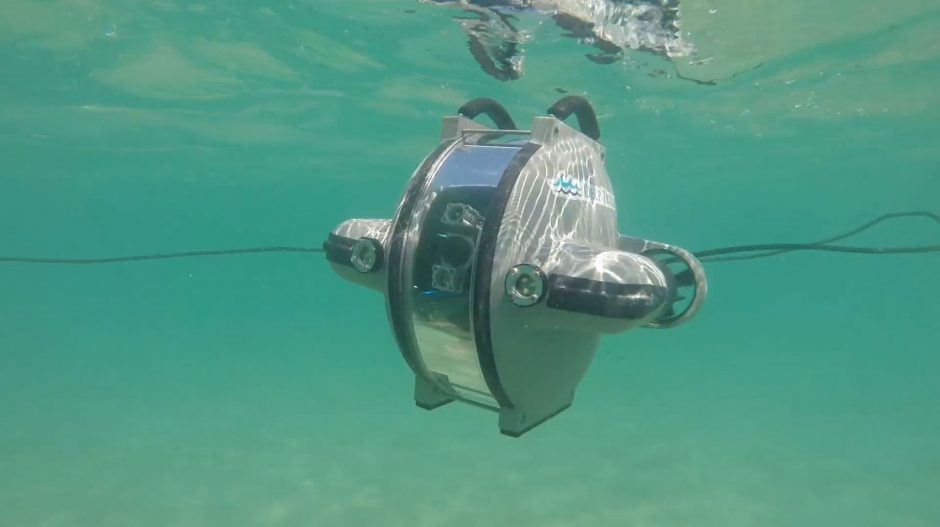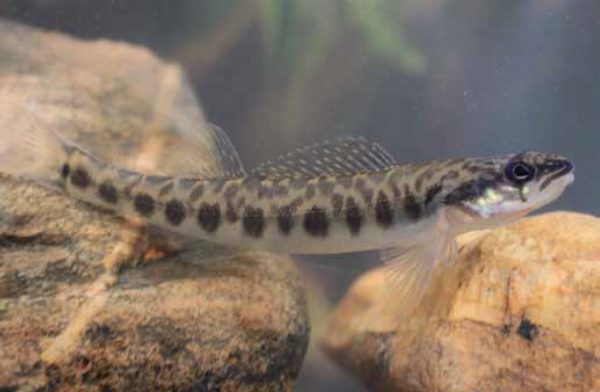Arkansas Game and Fish Deploys an Underwater Drone

Deep Trekker. (Credit: Deep Trekker, https://www.deeptrekker.com/buy-underwater-drone/)
The Arkansas Game and Fish Commission’s (AGFC) research team is taking their work deeper—underwater in fact. Biologist Jeff Quinn told EM about their recent tests of the Deep Trekker, an underwater drone equipped with a video monitor, which will be helping the team observe and work in hard to reach spots.
“We have only tested the unit three times, so it is still new to us,” explains Quinn. “The Deep Trekker ROV is a visual observation fish detection method that uses video to capture images of fish underwater. We are using it to ‘see’ under the water. So it is similar to snorkeling or SCUBA diving as a visual observation method where we do not touch or handle the fish.”
The AGFC has specific plans for the Deep Trekker, related to their work with threatened species.
“We think the Deep Trekker will be useful for studying fish species that are difficult to detect, scare easily, and then hide in the rocks,” details Quinn. “If we scare the fish and it hides, we should be able to see that, and then park the unit on the stream bottom and wait from the fish to come back out of the rocks.”
The Deep Trekker unit should make far less noise in the water than a person snorkeling or SCUBA diving, so the team hopes it will be able to approach fishes before they are scared away.
“The Deep Trekker should also be useful in deep water in remote locations, and may be a good way to search for rare species at night since it has lights,” adds Quinn. “We specifically purchased this ROV to search for the leopard darter, a threatened species, in the Cossatot River.”
The leopard darter or Percina pantherina is a federally threatened species, previously feared to have been extirpated from the Cossatot River. One darter was spotted in the Cossatot in fall of 2017, the first sighting in two years. Now experts like Quinn will be hoping to spot the shy fish without scaring it away or harming its habitat.
“I’m confident it will be useful for Leopard Darter surveys in the Cossatot River,” remarks Quinn. “I think we need more testing with the unit in a diversity of field conditions to understand how much current velocity or water flow the unit can handle. So far we have liked the unit. There is a learning curve to driving it. Operators need to read the directions or the first test drive might not go so well. We are hoping to implement field data collection with the Deep Trekker this fall.”
This additional testing will help the team decide how they might use it in other cases, and apply it to solve other research problems. On the one hand, it allows them to make deeper dives for longer amounts of time.
“We are still trying to figure out the exact conditions that Deep Trekker will be most useful,” Quin describes. “This will take some time to determine. It is really nice to have batteries that allow dives of four to six hours at deep depths.”

Leopard darter. (Credit: By Daniel Fenner / USFWS [Public domain], via Wikimedia Commons)
“The Deep Trekker is highly expandable and you can purchase sensors but the costs can add up quick,” states Quinn. “Right now we are only using it to obtain video.”
In fact, part of the challenge with the unit is learning to pilot it—although the team is getting the hang of it handily.
“The Deep Trekker has a controller and using it is similar to playing video games,” Quinn adds. “Deep Trekker has a tether cable that sends the signals from the controller to the ROV. The trick to driving it seems to be an adjustment of the pitch.”
Another possible use for the unit may be safety inspections at dams; additionally, we asked Quinn whether the AGFC team might be using the unit to monitor fish ladders.
“We have a construction supervisor that would like to use it for dam inspections, but it has not been used for the purpose yet,” Quinn clarifies. “I never thought about using it to ‘site’ an eel ladder during the spring, but that might be another interesting application for this equipment. Thanks for the idea.”
Ultimately, this kind of device may become part of the permanent toolkit for teams like Quinn’s, depending on how versatile the units prove to be—and how cost-effective.
“I think there are a lot of possible applications and the cost keeps coming down,” remarks Quinn. “As the costs come down, I think we will see many creative uses for the units. They are very good for documenting the stream bottom or substrate, so I think we will see more habitat monitoring applications.”
For Quinn and the team, the underwater unit is assisting them in monitoring even the most sensitive species in a minimally invasive way, and Quinn expects to see more underwater options on the market.
“The costs and uses for aquatic ROVs are rapidly changing,” states Quinn. “There are many new startup companies coming out with inexpensive plastic recreational-grade ROVs with nice cameras. These cheap units will lead to more widespread use of ROVs.”




0 comments